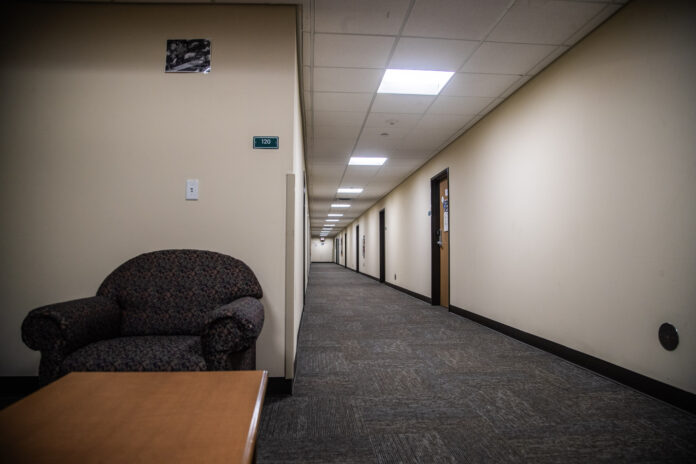
Those who were freshmen in 2023 are among the first class required to live on campus their sophomore year.
This policy has been met with criticism from upperclassmen who did not feel they were given a fair chance to stay on campus. “I don’t think [the new policy] is fair to juniors and seniors who wanted to live on campus,” a CA in building F said.
As of Sept. 5, there were 1,404 first-years, 716 sophomores, 271 juniors and 194 seniors living on campus. This is the biggest freshman class SRU has seen since before the COVID-19 Pandemic.
“We opened over our normal capacity, but I wouldn’t say it was even as strong as last year, because we were a little more prepared for it,” Housing Director Dan Brown said.
To make space, the school has been offering reduced prices for three beds in residential suite rooms, bunkbeds in traditional halls and two beds per room in four-bedroom dorms.
“We added occupancy to make sure everybody that needed to be here could be here,” Brown said. “Students sometimes forget, pre-COVID we always had triples.”
Still, students and their parents have voiced concern online. In the SRU parent forum, one mother explained that bunkbeds are assigned and her son who is over six feet tall must dangle his feet off the top bunk.
“Once you move in, we’re not going to police what goes where,” Brown said. “There have been some really unique setups where people can get all the beds down that they’re not bunks…I visited a couple where I went, ‘Huh, they really did that well…’ Everybody has their own unique spin on it.”
Brown believes most of the concern is due to students being nervous about living with a new person, and that living with two new people can be more nerve-racking.
“[O]n the flip side…” he said, “there were students calling that left doubles to go to triples because they had two friends, and now they can all be together…we had triples last year and there were students that just didn’t want to leave.”
Last fall, space was more limited. Six students shared one conference room and numerous community assistants (CAs) were required to have roommates. This year, no non-traditional spaces are in use and CAs only have roommates if they choose to do so.
The Rocket spoke with two CAs who shared what the new residency requirement has been like for them.
“It’s a lot more frustrating to be a [CA] with only underclassmen because they need their hand held a lot more,” one CA said, “but I haven’t noticed too many other changes.”
The other CA stated that administration wanted to emphasize that the CAs are students as well, but in turn, put “more work” on them.
“One of the things we’ve noticed is that a lot of groups of freshmen are going out to parties, not really the sophomores,” he said. “The freshmen this year party a lot more than the freshmen last year.”
Brown said it is likely more students want to experience a campus community as a result of the pandemic.
“ [Students] want to be where the action is,“ he said. This is supported by Chief Student Affairs Officer David Wilmes, who mentioned in a previous article that administration had expected more students to ask for exemptions from the policy.
Wilmes also stated in the past that the school intends to have clearer communication with juniors and seniors about their likelihood of securing on-campus housing.
He said this policy was initially introduced to increase retention between a student’s first and second year.
In 2024, the rate increased by 3% and stands as the highest on record since 2004.







